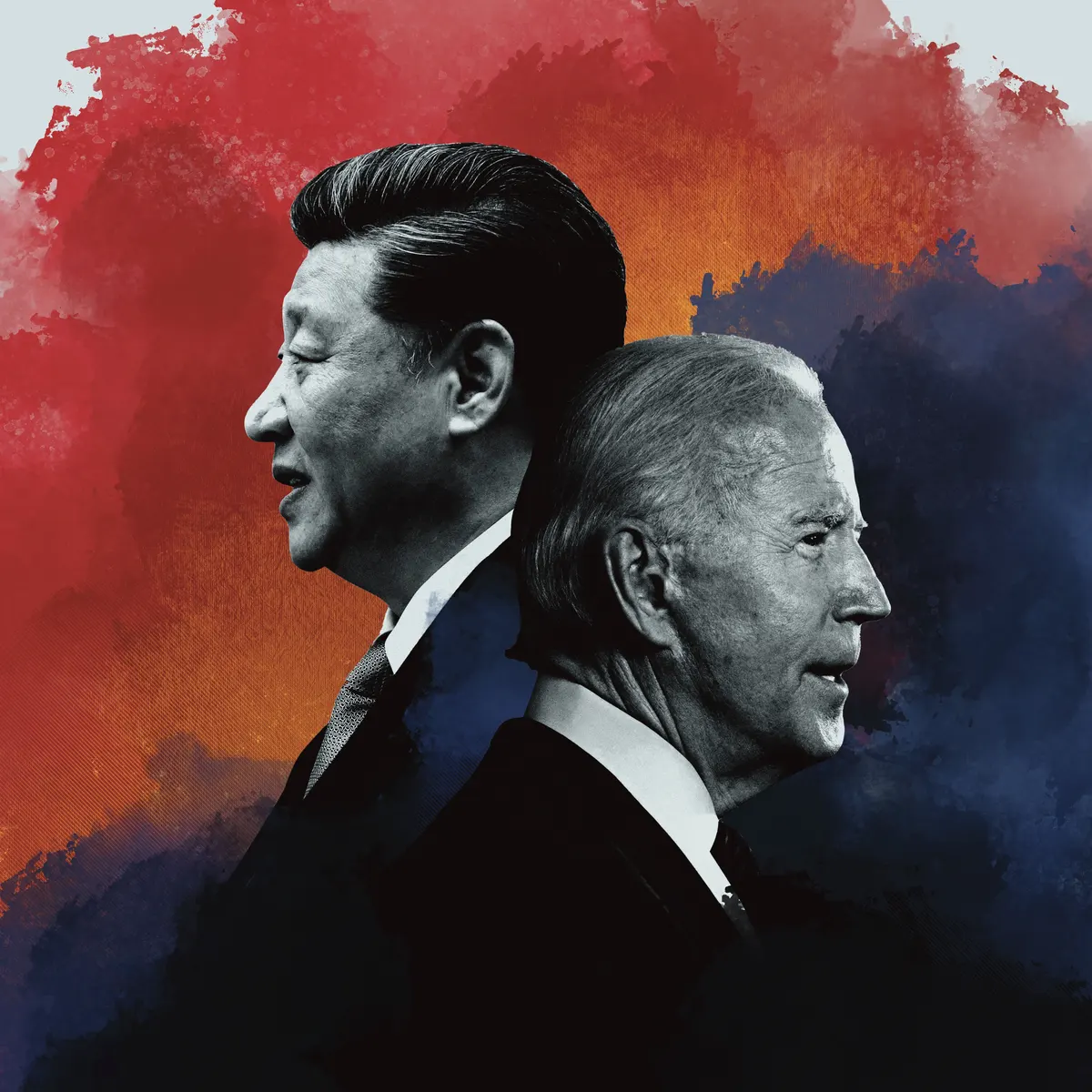Introduction
In a rapidly evolving world of technology and international trade, the semiconductor industry often finds itself at the center of US Vs China tech war with the current example of NAND Flash.
Yangtze Memory Technologies, a prominent Chinese semiconductor company, has recently unveiled its 120-layer NAND flash memory as a strategic response to circumvent US restrictions on the sales of NAND flash memory with 128 layers or more to China.
This development represents an innovative stride in the semiconductor market, and it comes as a solution to the challenges posed by geopolitical issues.
In this blog post, we will delve into the details of Yangtze Memory’s 120-layer NAND flash and how it has become a vital component in their quest to maintain technological advancement despite the imposed sanctions.
The Evolution of NAND Flash Memory by China
NAND flash memory has been a cornerstone in the world of data storage and computing. It has undergone tremendous evolution, with the number of memory layers stacked on top of each other, commonly referred to as “layers,” steadily increasing. The more layers, the greater the storage capacity and performance of the NAND flash.
However, US sanctions have posed a significant obstacle for Chinese semiconductor companies, including Yangtze Memory, which were barred from purchasing NAND flash memory with 128 layers or more.
In response to this challenge, Yangtze Memory developed a unique solution in the form of their 120-layer NAND flash memory as per industry sources.
Read More: 1 TB chip: SK Hynix’s 321 layer Flash Revolution
The Secret Weapon of NAND flash by China to US
Yangtze Memory’s 120-layer NAND flash memory represents a remarkable achievement. It is the product of the company’s enhanced Xtacking chip architecture.
This innovative architecture has been upgraded specifically for this memory, enabling it to match the I/O speed of existing NAND flash with 200 layers and more.
The secret weapon is that, by staying just below the 128-layer threshold, Yangtze Memory can avoid the US restrictions and continue to advance its semiconductor technology independently.
Read More: Why is Foxconn, a Taiwan-based iPhone-maker being investigated by China
Key Features of Yangtze Memory’s 120-Layer NAND Flash
Enhanced Xtacking Architecture: The upgraded Xtacking architecture allows the 120-layer NAND flash to perform at a level similar to NAND flash memory with more than 200 layers. This technology achievement underscores Yangtze Memory’s commitment to innovation and resilience in the face of sanctions.
Sample Deliveries Underway: Yangtze Memory has already commenced sample deliveries of the 120-layer NAND flash, demonstrating the company’s readiness to bring this technology to market.
Commercial Manufacturing in 2024: The company has plans to initiate commercial manufacturing of the 120-layer NAND flash in early 2024. This strategic move will not only boost the company’s production capabilities but also help meet the growing demand for NAND flash memory globally.
Read More: China Restricts Exports of Graphite, in response to US Ban
US Sanctions and the Entity List for NAND flash to China
Despite their technical capabilities, Yangtze Memory had to halt production of their 232-layer 3D NAND flash memory due to US sanctions.
In December 2022, the Bureau of Industry and Security-U.S. Department of Commerce added Yangtze Memory to the Entity List, which significantly restricts the company’s ability to do business with US entities.
Read More: What are the Key Regulatory Changes by US in the Expanded Ban to China?
Why 120 layer could be a masterstroke
Yangtze Memory’s strategic decision to stay just below the 128-layer threshold for their NAND flash memory is indeed a crucial and innovative approach to circumvent US restrictions and continue their semiconductor advancements independently.
To fully understand this strategy, let’s delve deeper into why this is a secret weapon and how it works:
Avoiding US Sanctions: The United States government imposed restrictions on the sale of advanced semiconductor technology to Chinese companies, including Yangtze Memory.
These restrictions, often tied to national security concerns, were specifically designed to limit China’s access to cutting-edge technology. In the case of NAND flash memory, the restrictions were imposed on products with 128 layers or more.
By developing a 120-layer NAND flash, Yangtze Memory strategically positioned themselves just below this threshold.
Compliance and Innovation:
Yangtze Memory’s creation of a 120-layer NAND flash underlines their dedication to adhering to international trade regulations. By staying below the threshold established by US sanctions, they remain in compliance, enabling ongoing research, development, and production without violation.
Maintaining Technological Advancement:
In the highly competitive NAND flash memory market, companies like Yangtze Memory must remain technologically advanced.
Developing a 120-layer NAND flash enables them to offer high-performance products while ensuring accessibility for Chinese customers and manufacturers without violating export controls.
Market Viability:
With a 120-layer NAND flash memory, Yangtze Memory can cater to the domestic and international markets without the limitations imposed by the US restrictions.
This expanded market access ensures that their products remain relevant and profitable, even as geopolitical tensions influence the semiconductor industry.
Independent Technological Growth:
Perhaps the most significant aspect of this strategy is that Yangtze Memory can continue its independent technological growth. Instead of relying on external sources for advanced NAND flash technology, the company has developed an in-house solution that allows them to progress without being held back by external sanctions.
Significance of 120 layer NAND Memory
The difference between a 120-layer NAND flash memory and a 128-layer NAND flash memory, while not insignificant, may not be dramatically significant for all use cases. The significance of this difference depends on various factors, including the specific application, performance requirements, and cost considerations. Here’s a breakdown:
Storage Capacity:
The difference in storage capacity between a 120-layer and 128-layer NAND flash memory chip is relatively small. It may be significant in applications where every gigabyte counts, but for most consumer and even many enterprise use cases, the difference is unlikely to be a deciding factor.
Performance:
While a 128-layer NAND flash chip may offer slightly better performance in terms of read and write speeds, the real-world impact of this difference can vary. In some applications, such as high-performance data centers or gaming PCs, the extra speed might be significant. However, for typical day-to-day computing or smartphone use, the difference in speed may not be noticeably significant.
Manufacturability:
The manufacturing process for NAND flash memory with more layers can be more complex and costly, which might be significant for the manufacturers themselves in terms of production costs and yields. However, for consumers and end-users, this aspect of the difference may not be directly significant.
Cost:
The cost of NAND flash memory is influenced by various factors, including the layer count. More layers in NAND flash can increase production costs. Over time and with larger production scales, this cost difference usually shrinks. Cost can be significant for manufacturers and may indirectly affect product pricing for consumers.
Compatibility:
Compatibility can be a significant factor, especially for manufacturers and system builders. Changes in NAND chip architecture, like layer count, may demand hardware or software adjustments. This factor is worth significant consideration.
Conclusion
Yangtze Memory’s 120-layer NAND flash showcases the semiconductor industry’s resilience and innovation. Overcoming restrictions, companies like Yangtze Memory continuously push technology boundaries.
The 120-layer NAND flash is pivotal for Yangtze Memory’s leadership in semiconductors. It’s a prime example of tech firms adapting in a dynamic global landscape.
We anticipate the impact of Yangtze Memory’s new memory solution on the industry’s future.
Reference: Digitimes Asia




